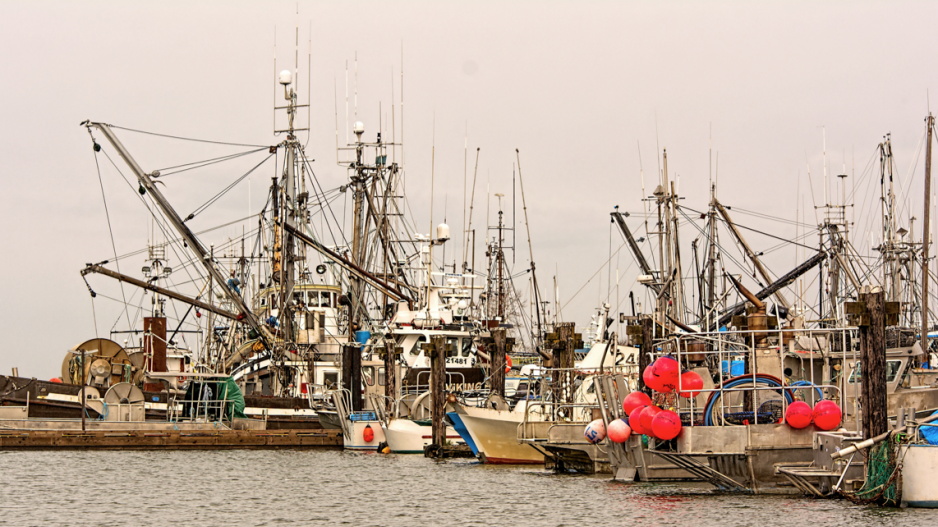It has been nearly 20 years since a renegotiation of the Pacific Salmon Treaty with the U.S. sparked a war between the B.C. government, Ottawa and the U.S.
That fight ended with Ottawa trying to expropriate a provincially owned seabed at Nanoose Bay – used for a joint Canadian-American submarine and torpedo test range – and generated such hostility that angry B.C. fishermen corralled an American ferry and held it hostage for two days in Prince Rupert in 1997.
The treaty was successfully renegotiated 10 years ago, with far less acrimony, although it did result in West Coast trollers taking Canada to court over its decision to reduce their allocation of chinook salmon by 30%.
The treaty expires at the end of this year. American and Canadian negotiators have been quietly working on its renewal for 18 months, said Brian Riddell, who is a Canadian commissioner to the Pacific Salmon Commission.
The negotiations are taking place when certain stocks – notably chinook and Nass and Skeena river sockeye – have declined sharply. Such trends always make negotiations more challenging, because neither side wants to give up their share of fish.
“We are seeing concerns for a decline in productivity for chinook salmon almost coast-wide,” Riddell said. “So that makes this discussion very difficult.”
He said commissioners were hoping to have an agreement to present to their respective governments for review and ratification by the end of March, but concerns over chinook and Nass and Skeena river sockeye are causing delays.
“There’s always issues, unfortunately, because of these variations in the production of the different species,” Riddell said.
The Pacific Salmon Treaty is an agreement between Canada and the U.S. that sets maximum catch levels for B.C., Alaska, Washington, Oregon and Idaho.
The first treaty was signed in 1985, and it was renegotiated in 1999 and 2009. Fraser River sockeye and pink salmon are something of an exception to the general agreement and are dealt with in a separate chapter.
Once American and Canadian governments ratify the treaty, fisheries managers – the Department of Fisheries and Oceans and Pacific Salmon Commission in Canada – use it as a guide to set annual catch limits for various sectors and regions.
“The treaty is a high-level framework and within that framework the two countries have to make their own management decisions as well, domestically,” Riddell said.
In the 1990s, Canadian fishermen complained that their American counterparts in Alaska and Washington were taking too many Canadian salmon. Part of the problem, Riddell said, was a “catch ceiling” approach used to calculate how many fish each country would be entitled to. But it has been replaced with a harvest-based management approach.
Today, there seems to be less wrangling over international allocations than domestic squabbles among the various sport, commercial and First Nations fisheries within B.C.
Fraser River gillnetters complain that they consistently get shut out of the sockeye fishery due to conservation concerns over certain stocks – even when others are strong.
And on the West Coast, trollers complain that they haven’t been properly compensated for the loss of opportunities to catch chinook.
And the commercial sector overall complains that the recreational sector – which gets priority when it comes to who fishes first – is a de facto commercial sector, because so many of the fish that are caught are through fishing lodges and fishing guides, which are businesses.
Kathy Scarfo, president of the West Coast Trollers Association, expects the troll fishing sector to again come out on the losing end of the stick when the treaty is ratified.
There are trolls fleets in B.C. that fish for chinook. They are what is known as an “outside” fishery – meaning they intercept salmon in the open ocean – whereas gillnet and seine fleets are inside fisheries.
In years when there are concerns about chinook abundance, the troll fishery might be the first to get shut down, and chinook stocks throughout the Pacific region have been in decline recently. There is the added concern over a declining southern resident killer whale population, because their primary diet is chinook.
“In a very poor year, then we have to be very conservative in the ocean fisheries because if you catch them outside, they can’t come inside,” Riddell said. “With the increasing uncertainty, we’re trying to be more conservative outside. So we’ll see some change in chinook.”
The last treaty renegotiation reduced maximum chinook catch levels in Alaska by 15% and for the B.C. West Coast troll fleet by 30%.
To compensate for that reduction, the federal government put up $30 million for mitigation, which included a licence buyback program. But Scarfo said the market value offered was so low that there has been little uptake by the troll sector.
“To make the program look like they were doing something, they bought licences from fleets in other regions that were unaffected by the reductions,” Scarfo said.
“We sacrificed our fishermen and fishing communities for a pittance in ‘mitigation’ and so they don’t have to fight internally with Alaska. We were entitled to equity on catch and have forgone this right. We invest in salmon and are losing our right to fish for good production.”
Prior to the Mifflin Plan of the 1990s, a commercial fishing licence allowed commercial fishermen to fish for a variety of salmon, using various gear – troll, seine and gillnet – in any region.
Under the Mifflin Plan, licences were restricted to specific areas, gear type and species. Scarfo said there are currently 140 licences for the West Coast troll fishery, about 75 of which are active. •



